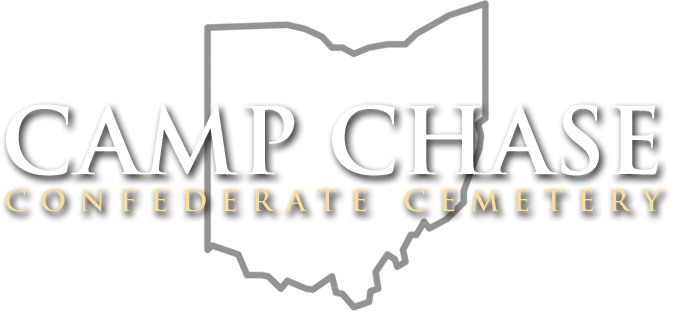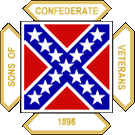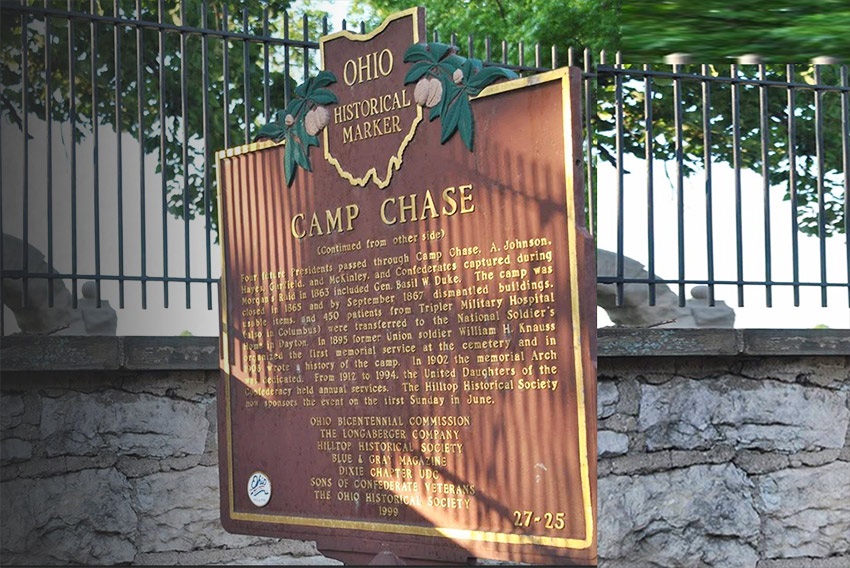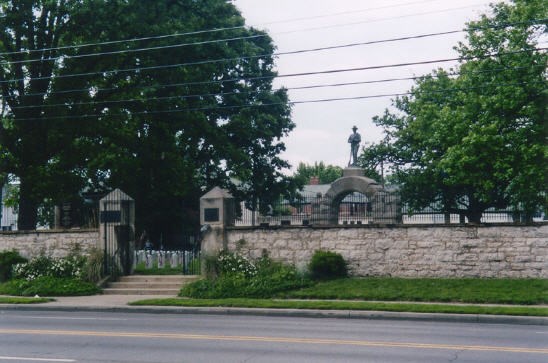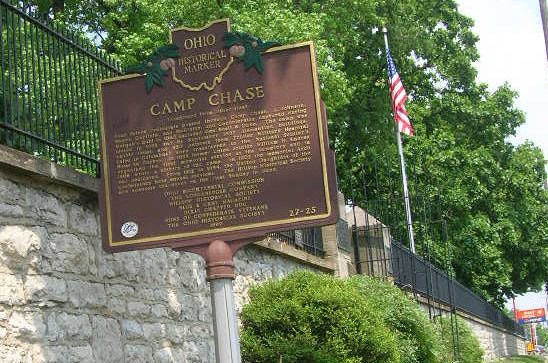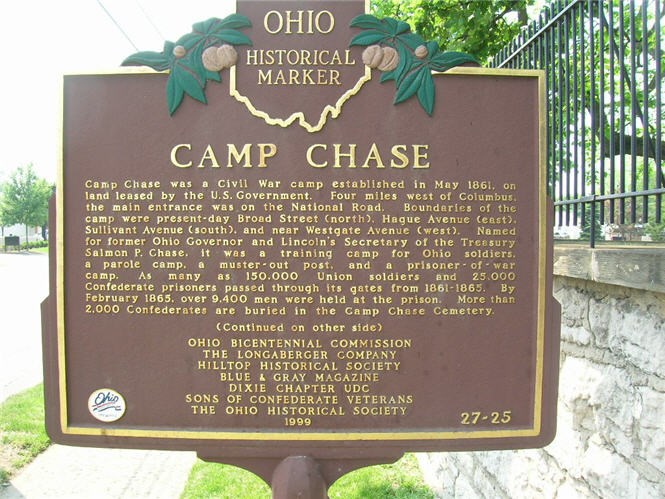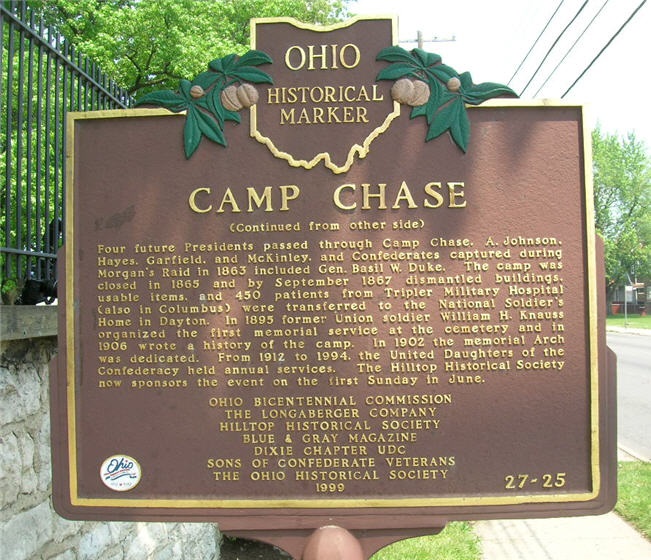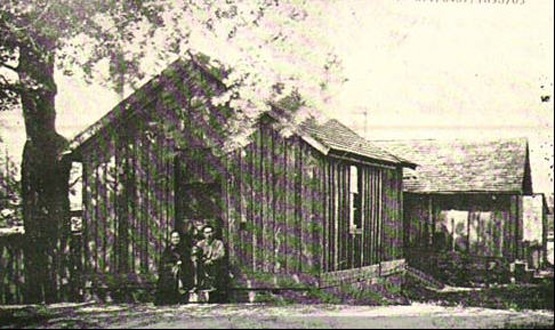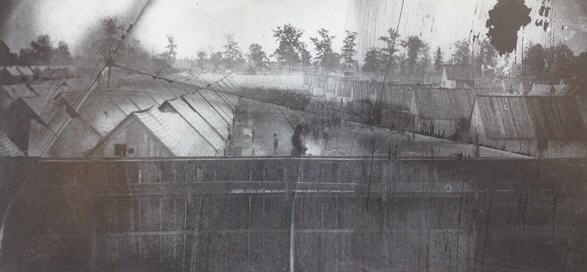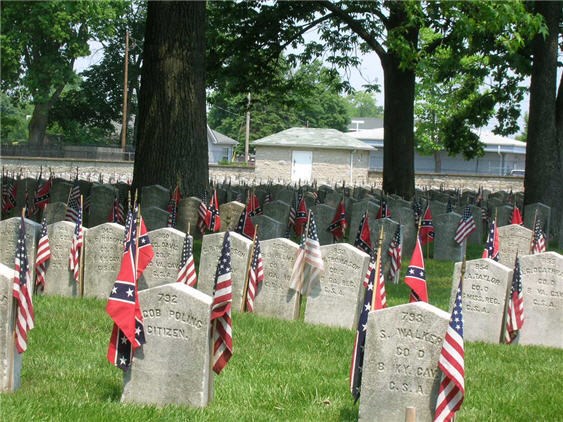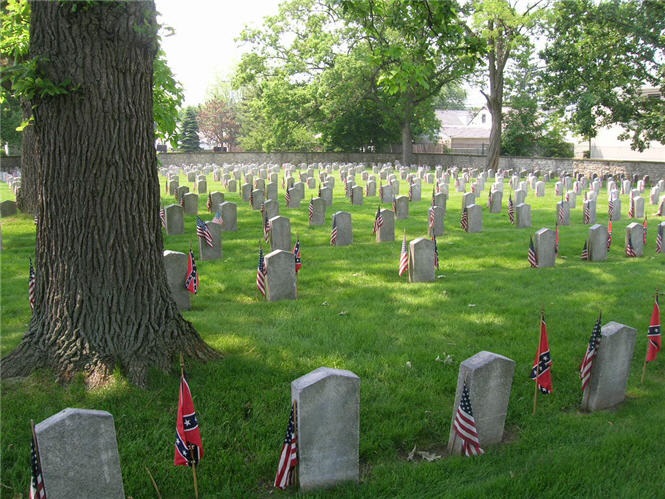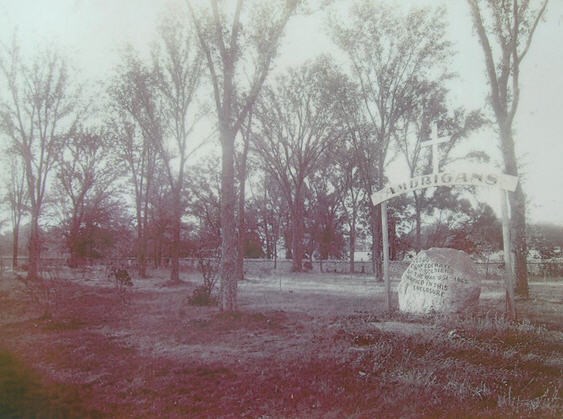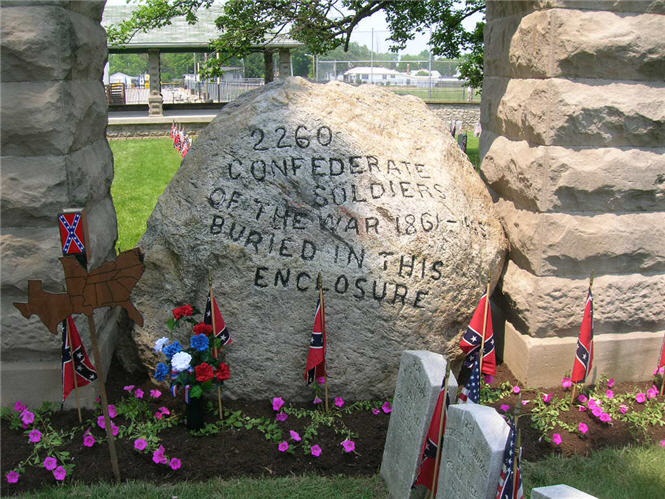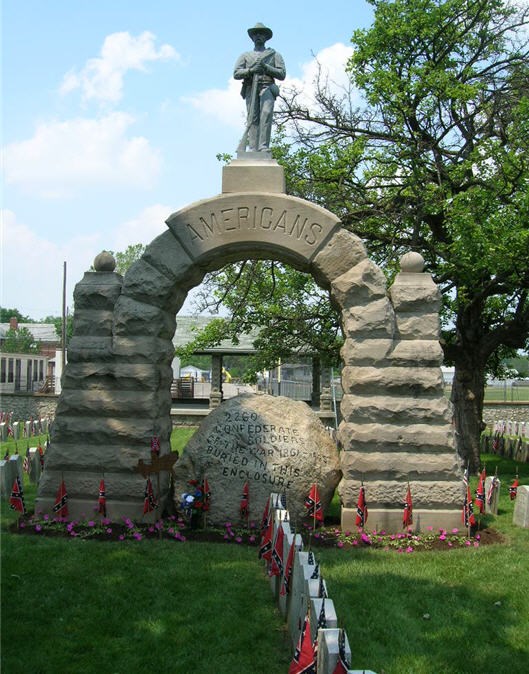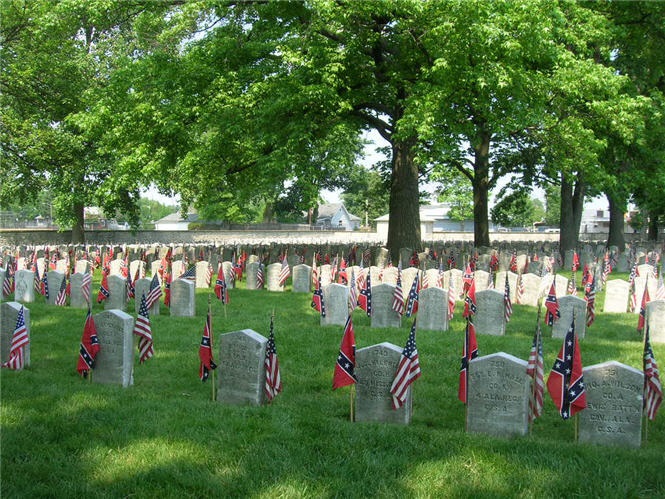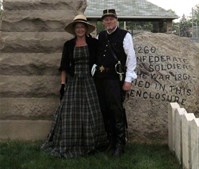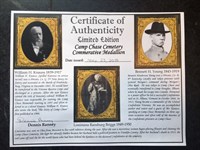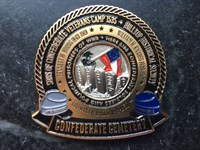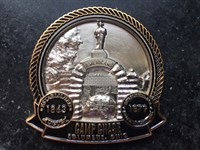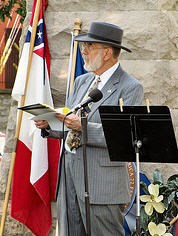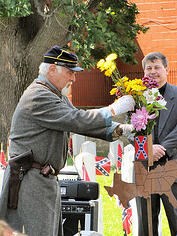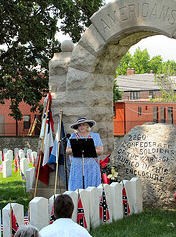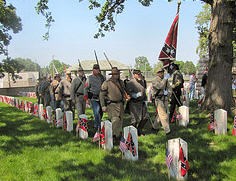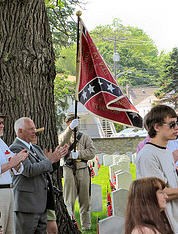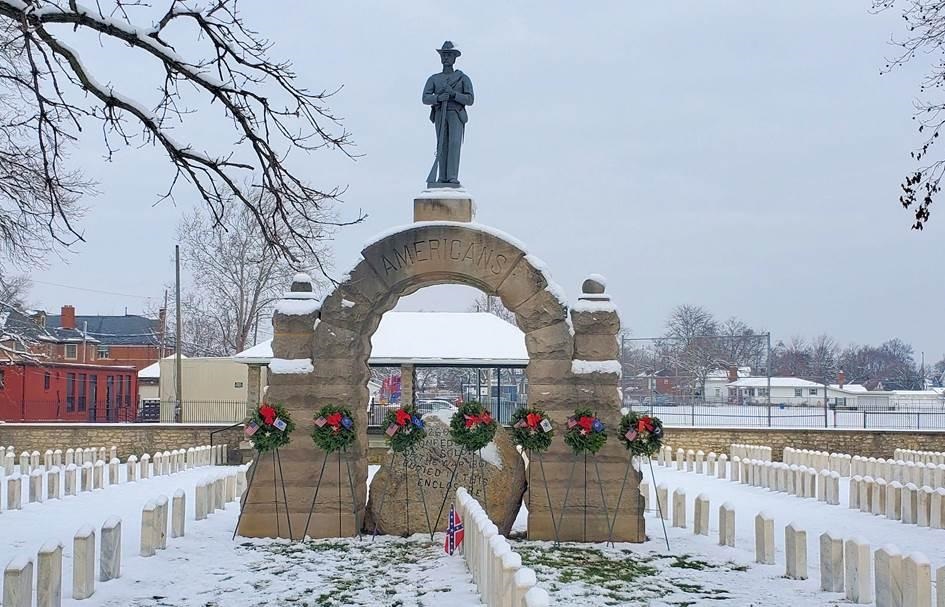Stories About Camp Chase
• Confederates Going Home
- What happened when the Confederates were released from prison camps, how they got back home, includes a picture of a travel pass
• Texas Soldiers
- Listing of Texas soldiers buried at cemetery – Texans and Confederate headstones for soldiers
• The following speech about three soldiers buried at Camp Chase was given in June 14, 2015 by Monty Chase during the Hilltop Historical Society's Camp Chase Memorial Service.
- Men who faced the great challenge of their time, ordinary men who valued something more than they valued their own lives.
• Lt. James O. Norton Co. F/K 32nd TN Infantry, C.S.A.
- Dr. Norton’s grave was not marked as Confederate, could this have saved him from having his dead body snatched and sold to a medical school?
• The Night They Drove Old Dixie Down and the Camp Chase Cemetery
- How Gen George Stoneman stormed Salisbury, NC in hopes of freeing Union prisoners and how the maneuver became a first-person account of a 1960’s song by Robbie Robertson.
• Private Michael Spence
- A Confederate Veteran of Pickett’s Charge at Gettysburg and member of Columbus Camp #1181 of United Confederate Veterans
• Captain Benjamin L. Wilkes Clack's 3rd Tennessee Infantry
- A mysterious headstone – engraved twice with the same name
• Thomas Battle Turley who became a Tennessee U.S. Senator
- Although only at Camp Chase a short time, he endured terrible conditions, but went on to become a TN Senator
• W.H. Lastinger (grave #225) Company K 29th Georgia Regiment CSA - Back from the dead?
- The story of who is buried in grave #225
• Facts About Camp Chase
- Interesting facts about Camp Chase cemetery
• Post Arkansas Confederate dead at the Camp Chase Cemetery
- Confederate officers originally interred at Southeast City cemetery, now rest in Row 41 of Camp Chase cemetery in double burials
• So-called Confederate Spy Plotted to Free Camp Chase Prisoners (Reported in Columbus Dispatch but inaccurate)
- Sets the record straight about Andrew J. Marlow
• Kidwell and United Confederate Veteran Camp 1181 in Columbus
- A teen aged boy takes on a soldier’s role and survives Pickett’s Charge
• The soldier behind the legend of the "Lady in Grey:
- Is this soldier the one the “Lady in Grey” mourns?
• The Captain and His Sergeant
- The story of S.A. Cunningham (of the Confederate Veteran Magazine) finding his Capt William L. Brown, Co B, 41st TN Infantry buried at Camp Chase
• A Lincoln Amnesty Oath
- Starting the journey back home - Taking the oath and release from prison
• A Confederates Adventure Helps To Establish Confederate Prisoner Flow To Camp Chase
- Escape attempts before being transported to prison camp
• The Engagements Before, During And After Utoy Creek, Georgia - Extracts taken from biographies of Camp Chase
- 138 soldiers’ stories after being taken prisoner
• Andrew Jefferson Caldwell a POW at Camp Chase
- A Walker County, GA resident joins the Confederate forces and is taken prisoner
• 616 Days: The Story About the Confederate Statue
- How the bronze statue was toppled by vandals and how “Fred” again took his post on top the arch in Camp Chase Cemetery
• Private John F. Ingram
- The story of John F. Ingram – a “typical” soldier’s death at Camp Chase
• Salmon Portland Chase and some facts of the 1857 Dred Scott Decision
- How Chase was influential in history, including some landmark court cases
• The Lady Behind the Veil: The Life of Louisiana Ransburgh Briggs
- The story of the “real” Lady in Grey at Camp Chase Cemetery
• A Missing Grave and Tombstone at the Camp Chase Cemetery
- Missing grave #59 – is William L. Pope buried there or not?
• The Ensign
- How the traditionally Naval rank of Ensign was used in the Confederate Army
• Scout, Spy, Soldier, Civilian? The Legacy of Mary Ann Wright
- A story of a woman in the Confederate service
• Who Is/Was Buried In Grave #63 At Camp Chase Cemetery
- So who lies in eternal rest in grave #63??
• Oh Brother, Where Art Thou?
- Brothers in life and military service, but who actually survived and who is buried in #525?
• A Journey of Twists and Turns: The Story of Private Tate Randolph Driesbach
- Few Confederate soldiers had so many connections with prominent figures in Alabama and American history as did Private Tate Randolph Driesbach. His life and death was an ongoing saga of important figures in our heritage.
• A Convoluted Tale of Twists and Turns
- Compiled by Dennis Ranney of the SCV and Joanie Jackson of the UDC
• Negroes Held at Camp Chase Per Report of Prisoners March 17, 1862
• Last Two Men to Die At Camp Chase
- Ironically the only planned execution at the Camp Chase Prison were not Confederate but rather Union soldiers. They were Hiram Oliver and J. W. Hartup both of Company A of the 43rd Ohio Volunteer Infantry.
• The Union and the 100-Day Men from Ohio: Some of Whom Were Mustered in at Camp Chase
- What happened when the Confederates were released from prison camps, how they got back home, includes a picture of a travel pass
• Some Men Who May Have Been Moved from the Camp Chase Cemetery
